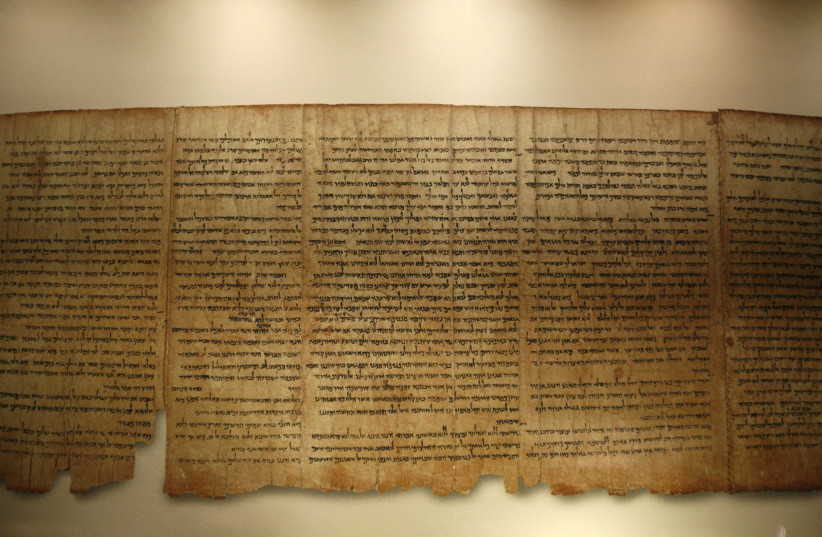 Did Qumran Jews use Torah scrolls 2,000 years ago? Plot thickens – study
Did Qumran Jews use Torah scrolls 2,000 years ago? Plot thickens – study
ROSSELLA TERCATIN

(photo credit: BAZ RATNER/REUTERS)
“The length of a scroll of the Law should not exceed the circumference, nor should the circumference exceed the length. What is a suitable length?” celebrated Jewish scholar Moses Maimonides wrote in his Mishne Torah in 1180 CE, before detailing all the characteristics that a scroll should feature to be considered fit to use for ritual objects.
Indeed, scrolls have been an essential part of Jewish life for millennia, as the discovery of the Dead Sea Scrolls, carrying some of the most fundamental Jewish texts, testified.
According to research by Eshbal Ratzon from Ariel University and Nachum Dershowitz from Hebrew University, the method used to estimate the length of missing ancient scrolls by scholars all over the world might lead to gross mistakes and should be reevaluated. The study was recently published in the journal PLOS ONE.
The findings might have far reaching implications in several fields, including Egyptology and the study of the classics.
As explained in the paper, for over a century, experts have employed a mathematical model which required estimating the outer circumference and thickness of the material and then calculating the length of the missing remainder with a specific formula utilizing patterns of damaged areas.
Ratzon, a Dead Sea Scroll researcher, and Dershowitz, a computer scientist, met while working at the project Scripta Qumranica Electronica, devoted to digitizing the entire corpus of the 25,000 fragments unearthed in the Qumran caves by the Dead Sea in the 1940s and 1950s.
“The traditional mathematical model used to approximate the length of the missing part of the scroll would treat a scroll as a combination of concentric circles,” she explained.
At the beginning, the researchers attempted to build a new model that would consider scrolls as spirals – which they effectively are – hoping to produce more accurate results. Ultimately their endeavor did not completely succeed although they were able to improve the math.
“We told ourselves that even though the model we had developed was theoretically better, we would verify how well both methods worked in reality,” she said. “We decided to test them on scrolls relatively intact and to see what would happen.”
Ratzon and Dershowitz applied the method to calculate the length of scrolls that were found relatively well preserved, including the Community Rule scroll, detailing the way of life of the community living in Qumran 2,000 years ago, and the Great Psalms Scroll.
The scrolls were chosen also by virtue of the fact that they presented the recurring patterns of damage necessary to apply the methods.
In the first case, the duo measured a margin of error between 1,800% and 250%, in the second between 40% and 250% – in spite of the fact that the Great Psalms Scroll probably presents the best conditions to measure the distance between damaged points, since a worm had eaten into the scroll in a straight line leaving very regular holes, as Ratzon pointed out.
While the scholar explained that it is difficult to foresee how their findings are going to influence the study of scrolls in the future, she said that the repercussions might be significant.
“For example, we do not know when Jews started to use Torah scrolls as we know them today, meaning with the Five Books of Moses copied on the same scroll,” Ratzon explained. “While no such scroll was found in Qumran, some experts believe that scrolls unearthed there featuring only parts of the biblical text might have actually contained the whole Torah. Our study could force us to reconsider assumptions about this topic – even though it is important to notice that the margin of errors that emerged can go in both directions: the full scrolls could have been much longer or much shorter than previously assumed.”
Zawartość publikowanych artykułów i materiałów nie reprezentuje poglądów ani opinii Reunion’68,
ani też webmastera Blogu Reunion’68, chyba ze jest to wyraźnie zaznaczone.
Twoje uwagi, linki, własne artykuły lub wiadomości prześlij na adres:
webmaster@reunion68.com
